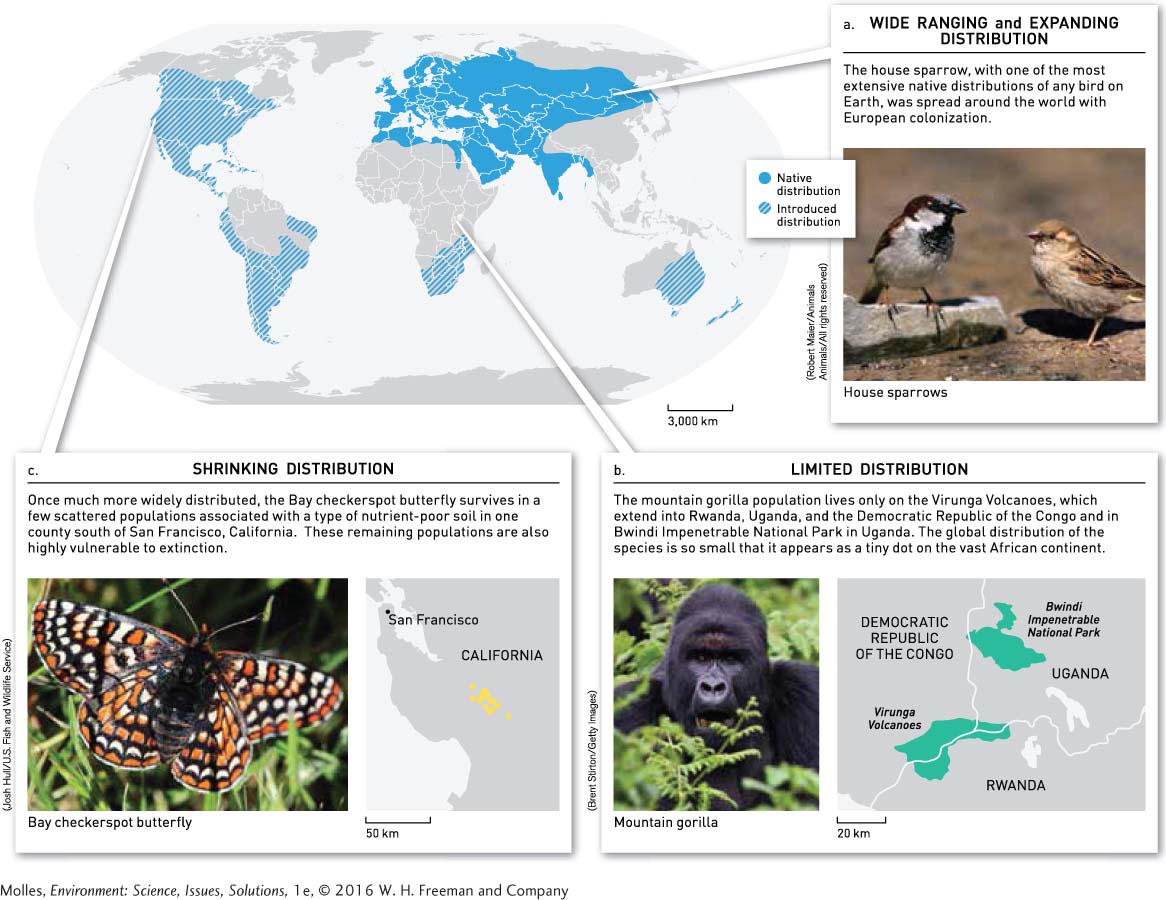3.2 Distribution and abundance are key indicators of population security
extinction The loss of all members of a species.
distribution The geographic range of a species.
It is no coincidence that endangered populations, such as the Venus fly trap of North and South Carolina, have small populations and often live in relatively small geographic areas. While thousands of geographically restricted species face the prospect of imminent extinction, the loss of all members of a species, other species are abundant and have wide distributions. For example, the familiar house sparrow, Passer domesticus, now lives on all continents except Antarctica (Figure 3.9a).

In contrast, the endangered mountain gorilla, Gorilla beringei beringei, lives in just two small areas in East Africa (Figure 3.9b). The total distribution of the mountain gorilla is approximately 700 square kilometers (270 square miles), about one-

How might the fact that house sparrows are associated with towns and cities explain its wide geographic distribution?
Some invertebrate species survive in even smaller areas. The Bay checkerspot, an endangered butterfly, survives in about 75 square kilometers (29 square miles), a small remnant of its former range in the central coastal region of California, approximately one-
adaptations Traits favored by natural selection for surviving and reproducing in a particular environment.
Why might a species be abundant in one place and absent in another? Climate turns out to be a major reason why all species, except for humans, have restricted geographic ranges. For example, the adaptations—traits favored by natural selection for surviving and reproducing in a particular environment—
Rare to Abundant

Why do you think expanding distribution and increasing abundance are generally included in endangered species management plans?
abundance (population size) The number of individuals in a population.
population density The number of individuals inhabiting some defined area.
When population ecologists refer to the abundance of a species, they mean the number of individuals in a population, also called population size. We can represent population size in two ways: as total population, the total number of individuals in the population, or as population density, the number of individuals inhabiting some defined area, such as numbers per square kilometer (km2) or per square mile (mi2). For example, the total house sparrow population has been estimated to number half a billion. In contrast, the global population of mountain gorillas totals approximately 700. Ecologists monitoring one of the last remaining populations of Bay checkerspot butterflies estimated that its population ranged from 12,000 during poor years to over 500,000 during a favorable year.
Population densities also vary widely among species. Larger species generally live at lower densities than smaller species and have lower total population sizes. For instance, the overall population density of mountain gorillas is approximately one per square kilometer. In contrast, the population density of the caterpillars of the Bay checkerspot butterfly can vary from 10,000 to more than 1 million per square kilometer.
Think About It
Why might larger species be generally more vulnerable to extinction compared with smaller species?
Why might herbivores be at less risk of extinction compared with carnivores in the same ecosystem? (Consider Figure 2.11, page 41.)